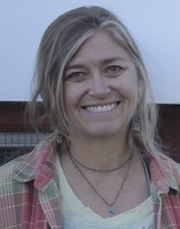By Jill Carstens
My son was a newborn when the Columbine shooting happened. I remember watching the news and saying to myself, “How will I ever become brave enough to send my son to school?”

Columbine was the first of many shootings to come, and what have we learned? According to news reports, the school in Uvalde, Texas, had prepared its own security plan including security staff, drills, metal detectors, security cameras, and so on.
But how did that help? And like a broken record, our government still cannot pass effective gun safety legislation.
Marian Betz, M.D., professor at CU School of Medicine and director of the Firearm Injury Prevention Initiative, says there is no one easy fix, but a simple thing gun owners can do is prevent access. The human brain is not finished developing until age 25, so it does not make sense to provide youth 21 and under access to a gun.
During my conversations with other teachers over the years, I was connected to Garen Wintemute, M.D., one of the nation’s leading firearm violence researchers and policy experts. He is the executive director of the UC Davis Health Violence Prevention and Research Program. Wintemute’s years of research point to rarely discussed but otherwise obvious causes of gun violence, examining social components that shape the lives of individuals in a community.
Wintemute’s colleague, Amy Barnhorst, M.D., points to the importance of access to safe parks, schools, and healthcare, as well as employment opportunities and affordable housing.
“These key influencers are often governed by socio-economic and environmental factors, often more prevalent in marginalized communities where discrimination has taken a toll,” Barnhorst said. “Due to a lack of alternatives, these communities often become hotbeds for gun violence and substance abuse.”
She adds that the key to preventing gun violence lies in early intervention, and not waiting until the last minute to pass some legislation. Community is a key word here, alluding to “connection.”
When a sense of community, of safety and belonging, is lacking, individuals can experience discrimination, bullying, and exclusion. If one looks into the lives of many of these school shooters, there is a history of bullying and disconnect so powerful that it simmered dangerously in them.
After reading this research, my thoughts went back to so many teaching situations where I witnessed bullying, indifference, and inequality in how individuals were treated. The playground was always a platform for this behavior and supervising teachers rarely acted on this mistreatment, passing it off as “normal schoolyard behavior.”
My instinct was to point out these situations and change how we handled them. Ever the thorn in my headmasters’ sides, I was usually told to mind my own business and that I was overreacting.
Years later I heard that one of these playground bullies, in his teens and long after he had left my hemisphere, had run away. Before he did, he displayed a substantial armory of guns on his bed to his little brother. See something, say something.
But we need our words to be heard and thoughtful action to be taken. We are behind on this, like so many social issues. They are all intertwined. In Colorado, a lack of affordable housing has been broadening the gap between the haves and have-nots. Jane Jacobs, urban studies activist, reiterated numerous times in her book ”The Life and Death of American Cities” that when affordable housing is placed in a food desert, detached from public transportation or green spaces and often in crime-ridden areas, it is not successful.
Also, gentrification has dispersed populations and destroyed any previous sense of community that might’ve existed. A lack of community or connection is related to mental health issues, which cross demographics.
I believe dealing with this piece begins at school and at home by being aware of and helping to prevent bullying, as well as providing resources for basic counseling and mentoring programs for individuals.
According to Barnhorst, investing early in people’s lives through basic human equities can add up to violence prevention.
“For example,” she says, “people who have the privilege of growing up in safe spaces with a lack of stress, abuse, and trauma grow up to be emotionally resilient and respond better to crises than individuals on the opposite side of the spectrum.”
Wintemute voices optimism about our collective capacity to bring about change. He urged people not to give up hope. In 80% of cases, he said, people who commit mass shootings make their intentions known in advance either to family members, friends, or via social media. In such cases, there’s always an opportunity to intervene.
“We can’t turn away from one another,” he concluded.
We can keep attempting to train schools to prepare for a shooting, or we can, in addition, build community as a society. This begins by housing everyone in a humane way and paying attention to bullying and exclusionary behavior.
I am distilling all of the research I have read into these tasks. In order for this change to happen, we all have to start talking, use our votes to advocate for affordable housing projects that foster community, and, really, the easiest thing: say something when someone is being mistreated or seems to need support. For further reading, visit scienceofviolence. org/about or health.ucdavis.edu/vprp/ ourteam/index.html.
Jill Carstens taught for 30 years and now enjoys writing for this publication! Email her with comments or story ideas at jill@denvernorthstar.com.

Be the first to comment